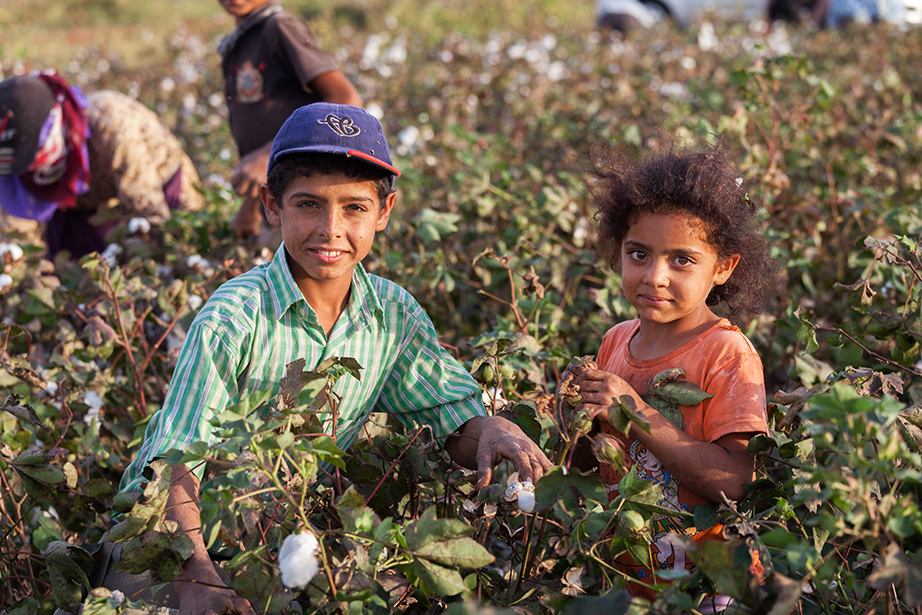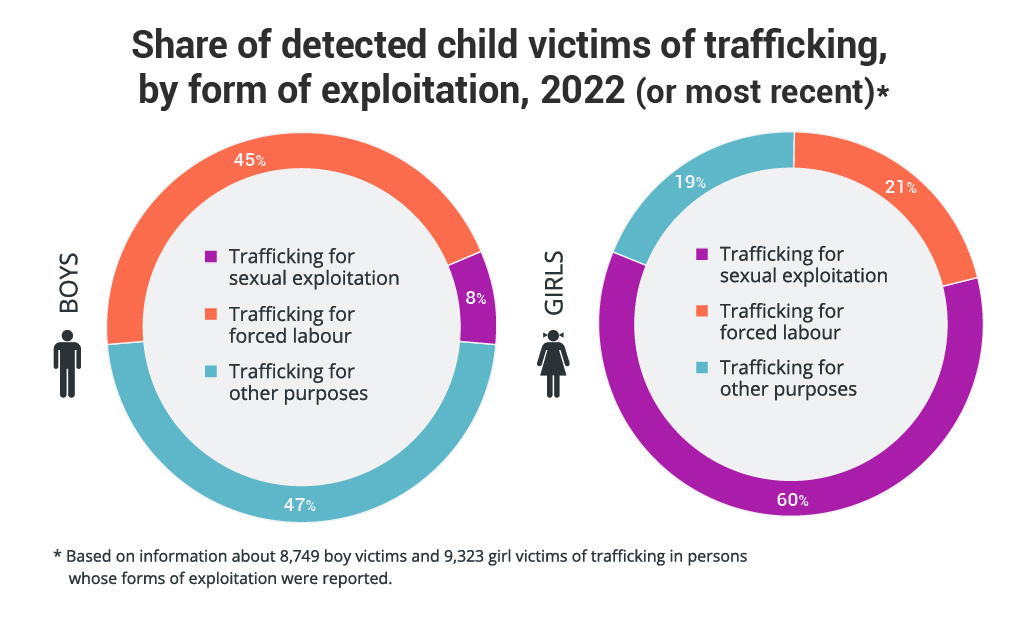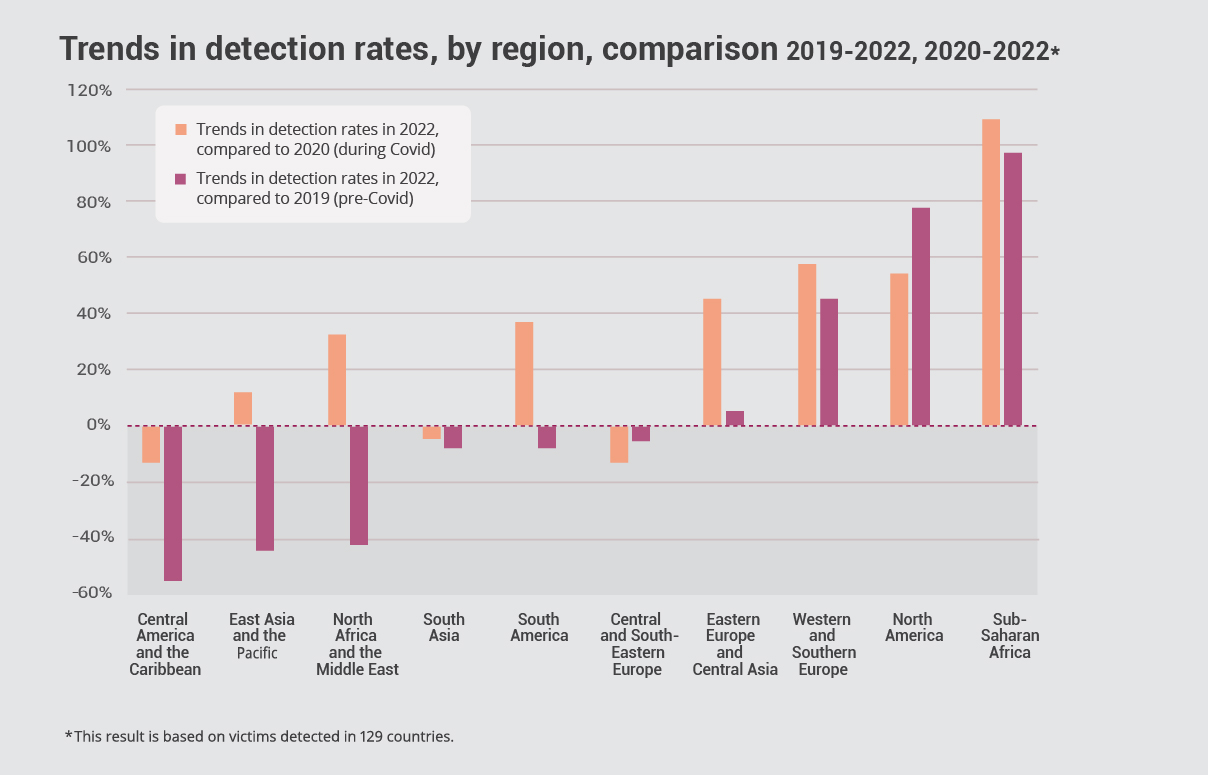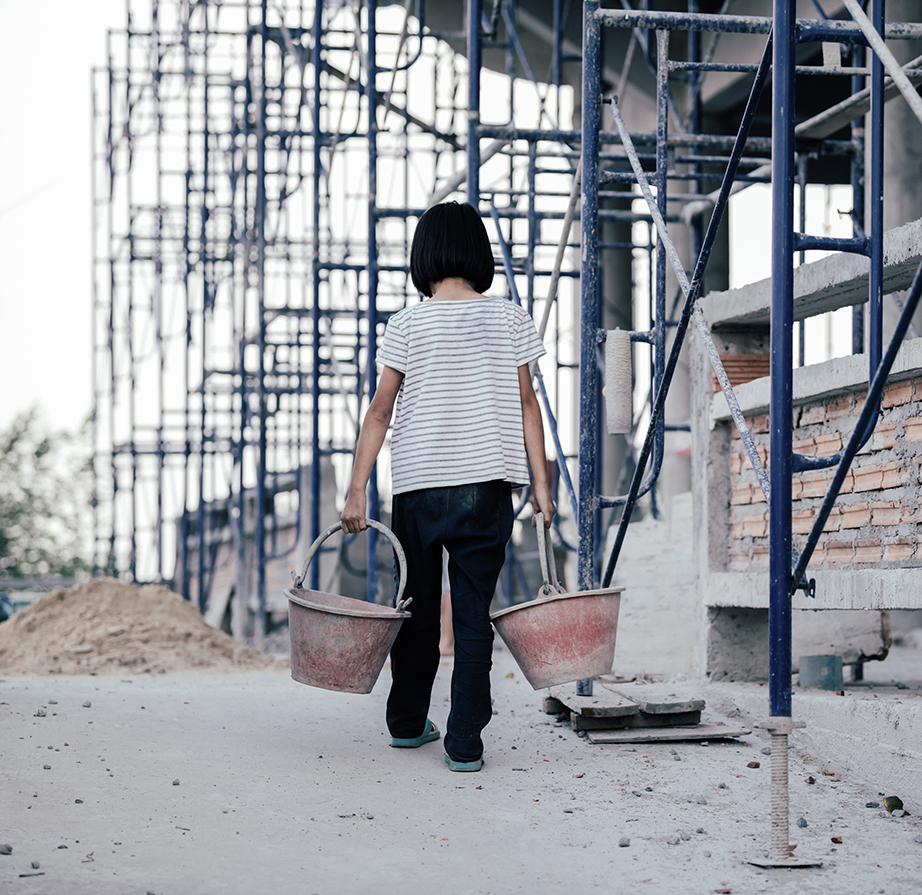UNODC’s 2024 report shows that trafficking victims rose sharply after the pandemic, with children and forced labor at the center of the surge.
Human trafficking is deepening in the shadows of today’s crises — expanding amid conflict, climate pressures, and the vulnerabilities left behind by COVID-19. A United Nations report warns that traffickers are adapting faster than protections can keep up, exploiting instability and drawing millions into webs of forced labor and exploitation that stretch across continents. The 2024 Global Report on Trafficking in Persons, released by the UN Office on Drugs and Crime, shows the crisis has not only surpassed pre-COVID levels but is reshaping exploitation patterns worldwide. From Sub-Saharan Africa to North America, organized networks are driving trafficking flows across 128 countries, exposing widening vulnerabilities and systemic failures in prevention and protection. As UN Secretary-General António Guterres says: “Trafficking in persons is a vile crime that feeds on inequalities, instability, and conflict. Human traffickers profit from people’s hopes and despair. They prey on the vulnerable and rob them of their fundamental rights. Children and young people, migrants and refugees are especially susceptible. Women and girls are targeted again and again.”
Number of victims in relation to COVID-19
By 2022, the number of detected trafficking victims rose 25 percent compared with 2019 and 43 percent compared with 2020, at the height of COVID restrictions. That means trafficking not only intensified during the pandemic but exceeded pre-pandemic levels once borders reopened. Regional differences were stark. Sub-Saharan Africa, North America, and Western Europe recorded significant increases compared with 2019. South America, Eastern Europe, Central Asia, East Asia, the Pacific, North Africa, and the Middle East saw detections rise from 2020 but remain below 2019 figures. Central America and the Caribbean reported the steepest decline since 2020, now at their lowest levels in years.
Child victims increasingly at risk
Children account for a growing share of trafficking victims, rising to 31 percent in 2022 compared with 2019. Girls are disproportionately affected, with cases up 38 percent globally. Central America, the Caribbean, Sub-Saharan Africa, and North Africa record the highest concentration of child victims, making up around 60 percent of cases. New patterns are also emerging. More girls are being trafficked in Europe, East Asia, the Pacific, and the Middle East, while in the Americas, their numbers have grown sharply compared with earlier trends. Boys, meanwhile, are increasingly exploited in Europe and North America. The UN links part of this rise to unaccompanied minors separated at borders, who are particularly vulnerable to traffickers. Exploitation varies by gender: about 60 percent of trafficked girls were forced into sexual exploitation, while nearly half of the boys were subjected to forced labor or other forms of abuse.
Forced labor on the rise
Forced labor has become the leading form of human trafficking, surpassing sexual exploitation by 6 percent. Between 2019 and 2022, cases rose 47 percent worldwide. Yet convictions lag far behind. In 2022, only 17 percent of traffickers were convicted for forced labor, compared with 70 percent convicted for sexual exploitation. UNODC attributes the gap to the higher number of victims per trafficker in forced labor, the professionalism of traffickers in these networks, and the complexity of forced labor systems. Sexual exploitation remains widespread and has increased slightly since before the pandemic. The most detections of forced labor victims were in Sub-Saharan Africa, North Africa, the Middle East, South America, and South Asia. Forced labor also surpassed sexual exploitation in Western and Southern Europe, East Asia, and the Pacific.
While anyone can be a victim of trafficking, women and girls remain disproportionately affected. As of 2022, 61 percent of detected victims were female, with 39 percent women and 22 percent girls.
Most identified female victims were exploited sexually while being trafficked. This was especially true for girls. In North America, the number of girls trafficked for sexual exploitation nearly doubled compared with 2019. By contrast, the number of women trafficked for sexual exploitation there declined 9 percent. Similar trends of girls being increasingly targeted were found across multiple regions.
Organized crime trafficking structures
Most traffickers operate within organized groups. Analyzing 942 court cases, UNODC found that 74 percent of traffickers were tied to a network, often linked to criminal organizations or business-type criminal structures. Only 26 percent were non-organized criminals. Business-type organizations trafficked more victims than governance-type groups, which tend to focus on territorial control.
Men made up 67 percent of those investigated for trafficking, women 29 percent, and children a small percentage. Women’s involvement often depended on the group structure. In organized trafficking, men and women frequently worked together, while in individual cases, intimate partner trafficking was more likely to be carried out by men, and trafficking of children was more likely by women.
African victims and global trafficking
As of 2022, victims of 162 nationalities were trafficked to 128 countries. UNODC recorded 436 distinct cross-border trafficking flows, ranging from short distances within regions to routes spanning continents.
Love Justice International CEO John Molineux said: “Human trafficking doesn’t spread evenly across a country; it’s highly concentrated because transportation itself depends on defined infrastructure: roads, airports, train stations, and bus terminals. This infrastructure isn’t uniformly distributed; it’s intentionally centralized and limited by significant investment, geography, and political factors. Consequently, human movement naturally funnels through key hubs rather than flowing freely everywhere.” Europe accounts for 24 percent of flows, East Asia 13 percent, South Asia 11 percent, South America 11 percent, Central America and the Caribbean 5 percent, and the Middle East 5 percent. Africa stands out, with 31 percent of flows involving African countries, mostly from Sub-Saharan Africa. African victims were detected in 60 countries, showing both a high origin rate and a wide global spread.
Displacement, insecurity, and climate change
Conflict, displacement, and climate change are heightening risks of trafficking, particularly in Africa, where many of these pressures converge.
Displacement reduces support systems and resources, making individuals more vulnerable. Traffickers exploit these conditions, forcing people into transactional exchanges for survival. Children are often targeted by armed groups for labor, support roles, sexual exploitation, and forced marriage, with boys disproportionately recruited. Forced labor tied to armed groups also depletes natural resources, worsening the climate crisis and deepening exploitation. In the Democratic Republic of the Congo, traffickers target people for mining.
African states have passed stronger laws to address trafficking, but enforcement often targets small actors rather than large organizations. Children are most often trafficked for forced labor near their homes, while adults are more commonly trafficked abroad for both labor and sexual exploitation.
Policy implications
The UNODC calls for:
● Stronger child protection systems.
● Preventive measures for unaccompanied minors at borders.
● Expanded legislation to curb the sexual exploitation of girls.
● Improved victim identification programs and training.
● More resources to identify, stop, and protect victims.
● Greater emphasis on prosecuting traffickers, especially where barriers to prosecution persist.
Multi-layered prevention strategies and better global trafficking data.
“COVID-19 has amplified trafficking dangers. Loss of jobs, growing poverty, school closures, and a rise in online interactions are increasing vulnerabilities and opening up opportunities for organized crime groups,’ says UNODC Executive Director Ghada Waly.
The report stresses that governments must strengthen protection systems, improve prosecutions, and tackle the root causes of vulnerability to stem the trafficking crisis.





